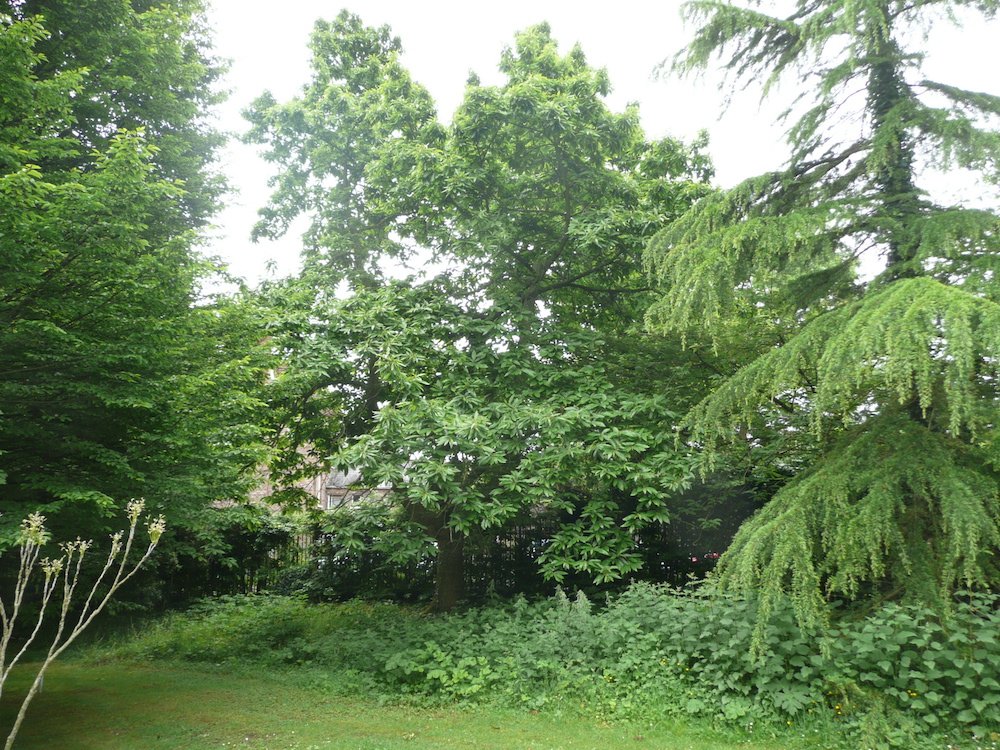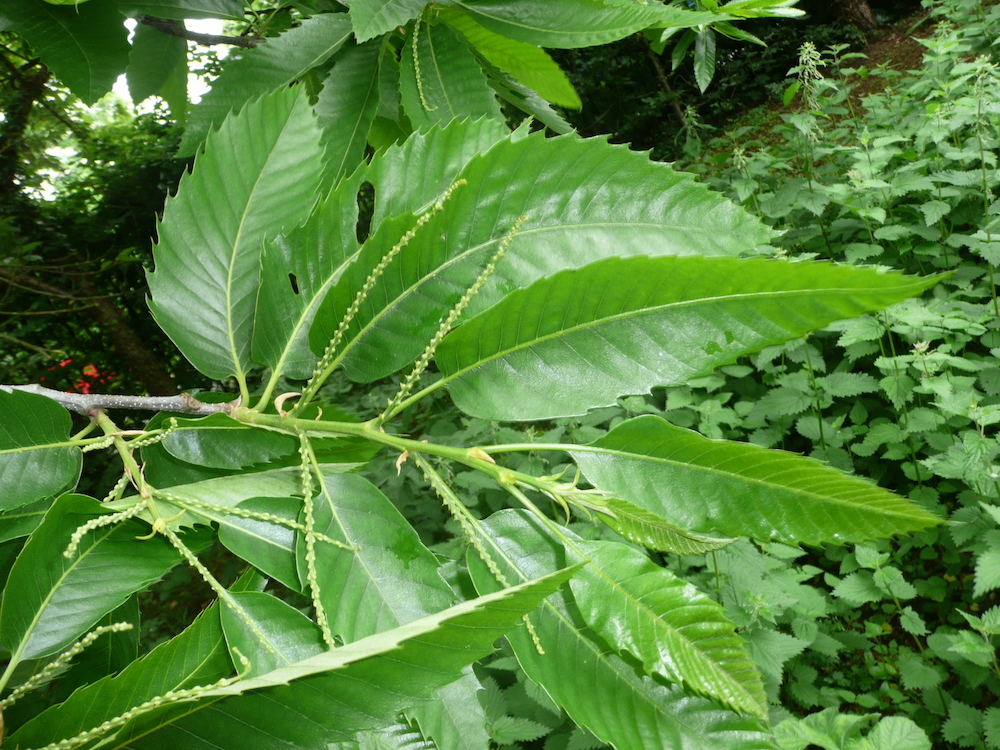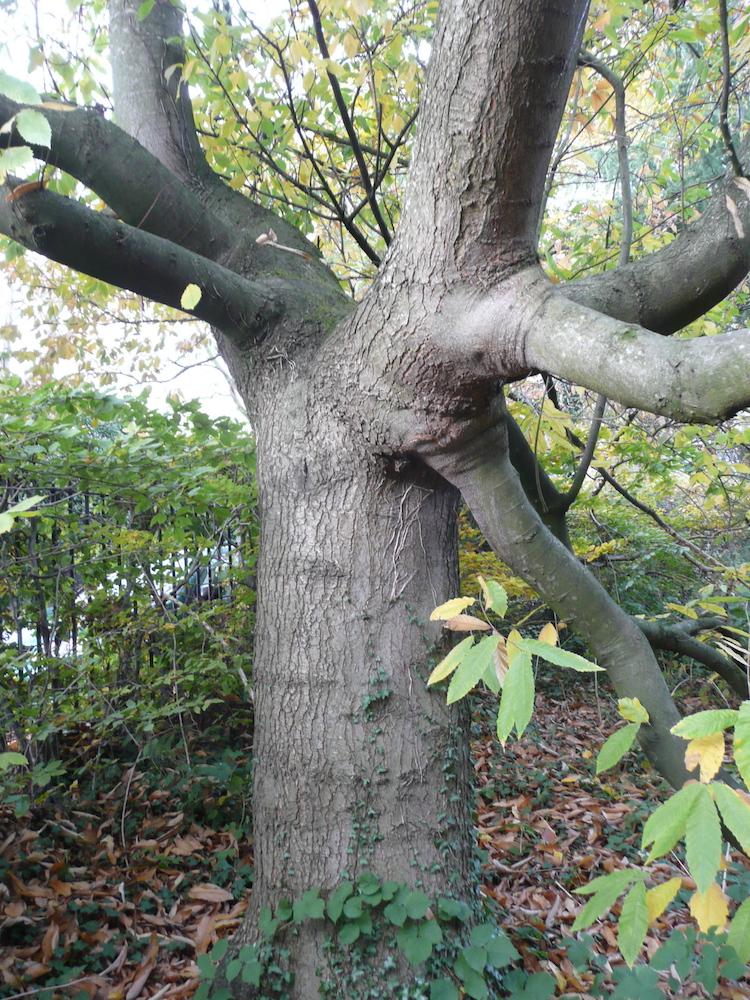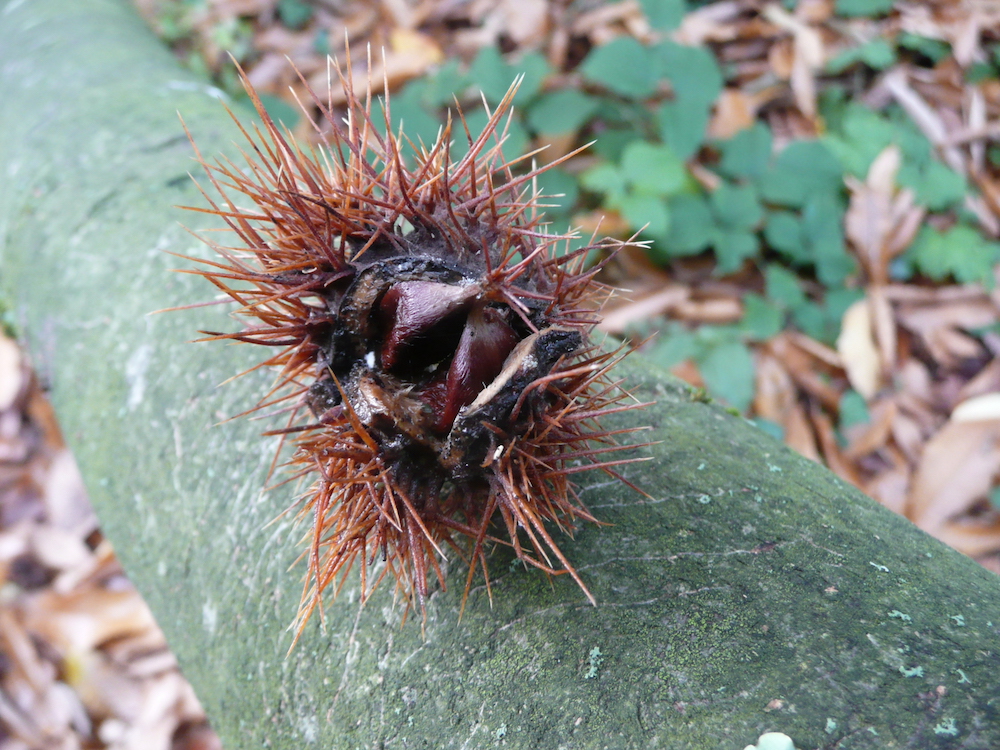Castanea sativa Mill.
Sweet chestnut
The tree tag number relates to the black tree-maintenance tags, usually fixed on the trunk, 2 to 3m above ground level.
The sweet chestnut, so called to distinguish it from the inedible horse chestnut (Aesculus hippocastanum) is a native of Southern Europe. Its fruit is enclosed in a spiny cupule and has a tough leathery outer shell. The nut is a valuable food source. As well as being roasted over coals on city streets throughout Europe in winter, the nuts can be ground to a nutritious flour and, candied, are the winter treat ‘marrons glacés’. The timber is a valuable resource. Large timbers, with a strength rivalling oak, are used in many historic buildings in France (both the wood and the tree are known as ‘châtaignier’). Chestnut trees may be traditionally coppiced, allowed to regrow as poles of around 5cm diameter. These are used in hop farms, for charcoal production and split to make chestnut paling fencing. Formerly there were extensive chestnut coppices in Kent to supply the hop farms.
Sweet chestnut trees are easily distinguished in summer by the very long, toothed, leaves. In winter, the furrowed bark which almost always spirals round the stem helps to distinguish them. In Northern Ireland Castanea seldom produces edible-sized nuts. The large nuts sold in shops are from cultivars selected for nut production.




Photos taken in Belfast Botanic Gardens in 2014. Copyright: Friends of Belfast Botanic Gardens.
